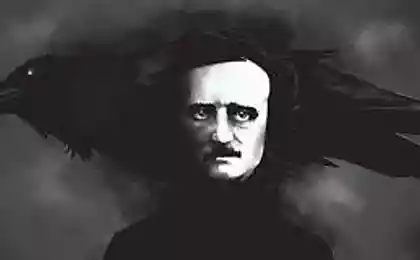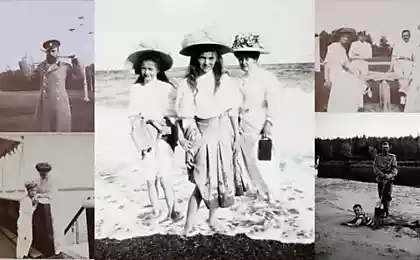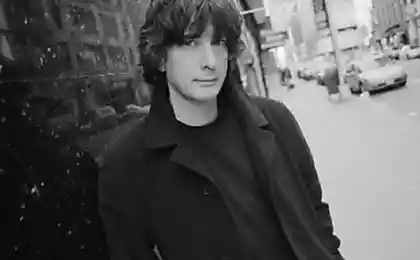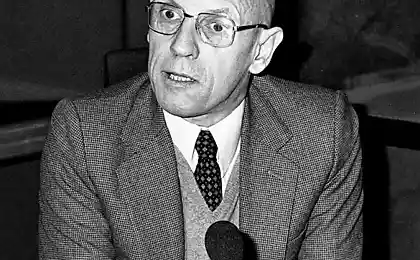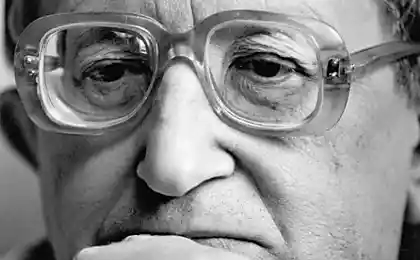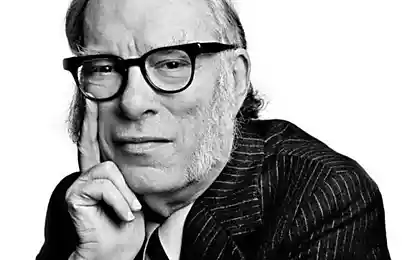939
10 talented madmen, who gave the world the great ideas
The life of a gifted writer is associated with a greater risk for the most vulnerable in man - his consciousness. A rise to fame, no matter how smooth it seems, almost always accompanied by a dangerous flirtation with an unknown, forbidden or insane.
Website is a list of not very healthy soul authors gave the world not only the magnificent literary works, but also a brilliant creative inspiration in the years ahead.
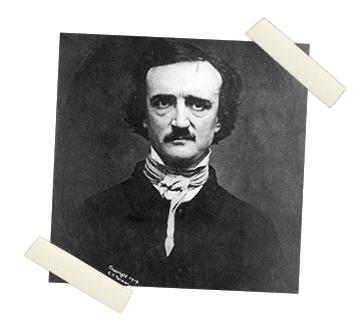
Patient 1:
Edgar Allan PoAmerikansky writer, poet (1809-1849)
Diagnosis: mental disorder, an accurate diagnosis is not established.
Symptoms: Fear of the dark, memory loss, persecution, inappropriate behavior, hallucinations.
Case History: Since the end of 1830 Poe suffered frequent depressions. In addition, he abused spirits, which affected his psyche is not the best way: under the influence of alcohol consumed writer sometimes fell into a state of violent insanity. For strong drinks soon increased .... Significantly worsened the state of mind of a serious illness According to his young wife (his cousin Virginia, he married thirteen, after seven years of marriage, in 1842, she fell ill with tuberculosis, five years later died). After the death of Virginia - for the remaining two years of his own life - Edgar Allan Poe in love several times and took two attempts to get married. The first failed because of the refusal of the chosen one, it frightened the next breakdown, the second - because of the absence of the groom: shortly before the wedding at heavily drunk and fell in a deranged state. He was found in a cheap tavern Baltimore five days later. The writer was placed in a hospital, where he died after five days of terrible suffering from hallucinations. One of the biggest nightmares at - death alone - has come true: a lot with what he took to be a promise to him in the last hour, but the three in the morning on Oct. 7, 1849 none of the family was not close. Before his death By desperate summons Jeremy Reynolds, a researcher of the North Pole.
The ideas presented to the world: Two popular modern literary genre. The first - the novel (or story) horror. Great influence on Poe had Hoffmann, however Hoffman gloomy romanticism In the first thickened to the consistency of a true nightmare - a viscous, highly sophisticated and hopeless ("Tell-Tale Heart," "Fall of the House of Usher"). Second genre - detective. That Monsieur C. Auguste Dupin, the hero of the stories of Edgar Allan Poe ("The Murders in the Rue Morgue," "The Mystery of Marie Roget"), became the ancestor of the emergence of the deductive method and its apologist for Mr. Sherlock Holmes.
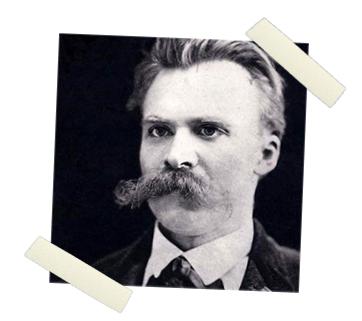
Patient 2:
The German philosopher Friedrich Nietzsche (1844-1900)
Diagnosis: Nuclear mosaic schizophrenia (a literary version, designated in most biographies - possession).
Symptoms: Megalomania (sent out a note with the text: "In two months I'll be the first man on earth", demanded to remove from the walls of the picture, for his apartment "temple"); aberration (he embraced with a horse on the central town square, preventing the movement of the street); severe headaches; inappropriate behavior. The medical records of Nietzsche, in particular, stated that the patient drank from his boot your urine emitted inarticulate cries, took the hospital guard for Bismarck, tried to barricade the door shards of broken glass, slept on the floor beside the bed, jumping on a goat, made a face and stuck out left shoulder.
Case History: Nietzsche suffered a stroke a few; He suffered mental illness the last 20 years of his life (in this period were the most important of his works - for example, "Thus Spake Zarathustra"), 11 of which he spent in psychiatric hospitals, homes for the care of the mother. His condition steadily deteriorated - at the end of the life of a philosopher could be a simple phrase.
The ideas presented to the world: The idea of superman (paradoxically, it is this jumping on a goat, and stick out his left shoulder fellow we associate with a free, nadmoralnoy, perfect, existing beyond good and evil person). The idea of the new morality (morality masters in return morality of slaves): healthy morality should celebrate and strengthen the natural human desire for power. Every other painful and moral decadence. The ideology of fascism: the sick and the weak must die, strong - to win ("Falling shove!"). The assumption "God is dead».
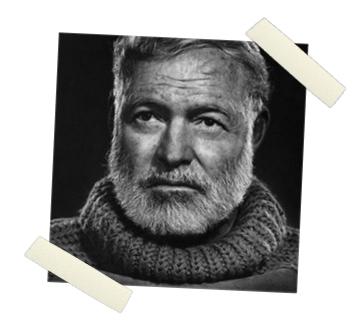
Patient 3:
Ernest HemingueyAmerikansky writer (1899-1961)
Diagnosis: The acute depression, a mental disorder.
Symptoms: suicidal tendencies, persecution, nervous breakdowns.
Case History: In 1960, Hemingway returned to the United States from Cuba. He was tormented by frequent depression, feelings of fear and uncertainty, he almost could not write - and therefore voluntarily agreed to undergo treatment in a psychiatric clinic. Hemingway underwent 20 sessions of electroshock on these procedures, he said: "The doctors who made me an electric shock, the writers do not understand: What is the point was to destroy my brain and erasing my memory, which is my capital, and throw me on the side of life? It was a brilliant cure, only patient they lost. " Upon leaving the clinic Hemingway was convinced that he still can not write, and made the first attempt of suicide, but relatives were able to stop him. At the request of his wife, he took a second course of treatment, but has not changed its intentions. A few days after discharge, he shot himself in the head of your favorite shotgun, charging the pre-both barrels.
The ideas presented to the world: The idea of the "lost generation". Hemingway, like his fellow era Remarque had in mind a particular generation, millstones to grind a particular war, however, the term has appeared a bit too tempting and convenient - since each generation finds a reason to consider themselves lost. New literary device "method of the iceberg" when the mean, compressed text implies generous, heart-rending subtext. "Machismo" new model, embodied in the works, and in life. Hemingway's hero - a stern and taciturn fighter who understands that fighting is useless, but fights to the end. The most uncompromising macho Hemingway was perhaps the fisherman Santiago ("The Old Man and the Sea"), in which the mouth of the Great Ham put the phrase: "Man is not created in order to take a beating. A man can be destroyed but not defeated. " Hemingway himself - a hunter, a soldier, an athlete, sailor, angler, explorer and Nobel laureate, whose body is completely covered with scars - to the great dismay of many, fight to the end did not. However, his ideals writer has not changed. "The man has no right to die in bed, - he said. - Either in battle or a bullet in the forehead ».
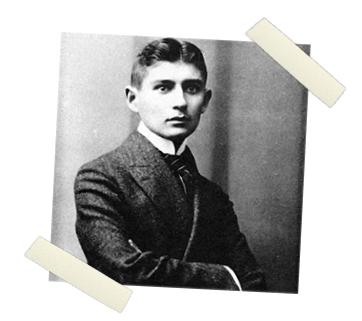
Patient 4:
Franz KafkaCheshsky writer (1883 - 1924)
Diagnosis: Severe neurosis psychasthenia functional nature, non-recurring depression.
Symptoms: excitability, with intermittent bouts of apathy, sleep disturbance, exaggerated fears, psychosomatic problems in the intimate sphere.
Case History: deep psychological roots of Kafka's failures originated from the conflict with his father, difficult relationships with family and complicated, tangled love stories. Fascination with writing was not encouraged in the family, and had to do it furtively.
"For me this is a terrible double life - he wrote in his diary - from which, perhaps, there is only one way out - the madness».
When his father insisted that after serving the son was still working in his shop, but not engaged in nonsense, Franz decided to commit suicide and wrote a farewell letter to his friend Max Brod "At the last moment I managed intervening quite unceremoniously, to protect him from" loving parents "- Max Brod wrote in his book about Kafka. His mental condition marked periods of deep calm and smooth, are replaced by the same long periods of the disease state.
Here are lines from his "Diaries" clearly reflect this inner struggle: "I can not sleep. Only the vision of no sleep. Strange instability of all my inner being. The monstrous world that I carry in my head. How do I get rid of him and to release him without destroying? ».
Writer died at age 41 of tuberculosis. Three months later, he was in agony: destroy not only the body but also the mind.
The ideas presented to the world: Kafka was not known during his lifetime, published little, but after his death the writer's work captivated readers a new trend in literature. Kafkaesque world of despair, horror and despair grew out of his personal drama of creation and became the basis of a new aesthetic direction of "literature with a diagnosis of" very typical of the XX century, has lost God, and received in return the absurdity of existence.
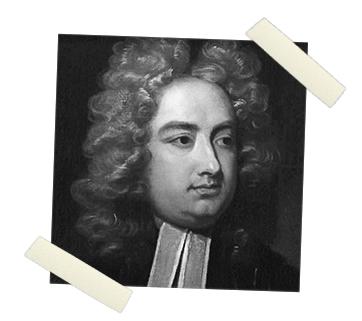
Patient 5:
Jonathan SviftIrlandsky writer (1667-1745)
Diagnosis: Pick disease or Alzheimer's disease - experts argue.
Symptoms: dizziness, disorientation, memory loss, inability to recognize people and objects around, catching the meaning of human speech.
Case History: The gradual increase in symptoms up to full dementia later in life.
The ideas presented to the world: A new form of political satire. "Gulliver's Travels" is certainly not the first glance sarcastic enlightened intellectuals to the surrounding reality, but innovation is not in sight, and in optics. While other scoffers looked at life through a magnifying glass or a telescope, the dean of the Cathedral of St. Patrick fashioned for this lens with fancy curved glass. Later this lens with pleasure enjoyed Nikolai Gogol and Saltykov-Shchedrin.
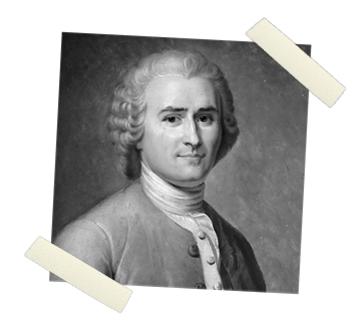
Patient 6:
Jean-Jacques RussoFrantsuzsky writer and philosopher (1712-1778)
Diagnosis: Paranoia.
Symptoms: Mania persecution.
Rousseau imagined conspiracies everywhere, he led the life of a wanderer and never stay long in the belief that all his friends and acquaintances in wait against him or something he is suspected.
Case History: As a result of the conflict with the Church of the writer and the government (the beginning of 1760, after the release of the book "Emile") originally inherent suspicion Rousseau got extremely painful form. He always imagined conspiracies, he led the life of a wanderer and never stay long in the belief that all his friends and acquaintances in wait against him or something he is suspected. So, once Rousseau decided that the inhabitants of the castle, where he was staying, according to his poisoner deceased servant, and demanded the autopsy of the deceased.
The ideas presented to the world: Educational Reform. The modern child-rearing allowance on many items repeated "Emile": instead of the repressive methods of education Rousseau proposed method of encouragement and affection; he believed that the child should be free from mechanical zatverzhivaniya dry facts, and explain everything in the living examples, and only when the child will be mentally ready to accept the new information; Rousseau believed the task of pedagogy inherent nature of the development of talent, not a correction of the individual. A new type of literary character and new literary trends. Rousseau starry-generated fantasy creature - tearful "savage" guided not by reason, but the feeling (but a moral sense), - continue to develop, grow, and the oldest in the framework of sentimentalism and romanticism. The idea of a democratic state, stems directly from the work "The Social Contract". The idea of revolution (this works of Rousseau inspired fighters for the ideals of the French Revolution, Rousseau himself, paradoxically, was never a supporter of such radical measures).
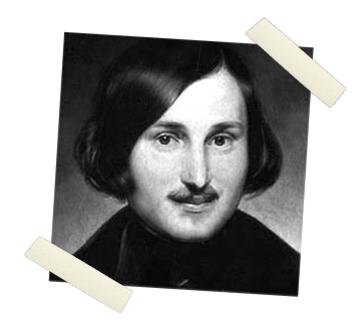
Patient 7:
Nikolai GogolRussky writer (1809-1852)
Diagnosis: Schizophrenia periodic psychosis.
Symptoms: visual and auditory hallucinations; periods of apathy and lethargy (up to complete immobility and inability to respond to external stimuli), alternating with bouts of excitement; depression; hypochondria in an acute form (the great writer was convinced that all the organs in his body shifted slightly and the stomach is "upside down"); claustrophobia.
Case History: These or other symptoms of schizophrenia accompanied Gogol throughout his life, but in the last year of the disease has progressed significantly. January 26, 1852 of typhoid fever sister died of his close friend Catherine Mikhailovna Khomyakov, and this has caused the death of the writer's strongest attack of hypochondria. Gogol plunged into incessant prayers, virtually refused food, complained of weakness and malaise, and argued that the terminally ill, but doctors no disease, except for a small gastrointestinal disorder, had not been diagnosed. On the night of 11 of February 12, a writer burnt his manuscript (the next morning he explained this act machinations of the evil), then his condition steadily deteriorated. Treatment (not too much, however, the professional: a leech in his nostrils, wrapping sheets and cold dipping their heads in ice water), positive results were achieved. February 21, 1852 the writer had died. The true cause of his death remained unclear. Yet, most likely, simply Gogol himself into a complete nervous and physical exhaustion - it is possible that the timely help of a psychiatrist could have saved his life.
The ideas presented to the world: A particular love for the little man (layman), consisting of half-disgusted, half of pity. A whole bunch of amazing accuracy found Russian types. Gogol has developed several role models (the brightest - the characters of "Dead Souls"), which is quite relevant to this day.
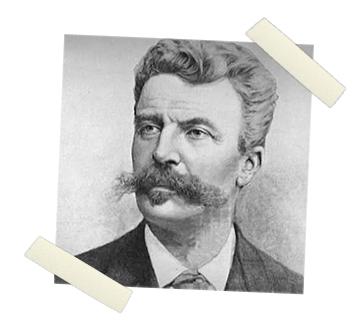
Patient 8:
Guy de MopassanFrantsuzsky writer (1850-1893)
Diagnosis: Progressive cerebral palsy.
Symptoms: Hypochondria, suicidal tendencies, seizures riot, delusions, hallucinations.
Case History: All my life Maupassant hypochondriac, he was very afraid to go crazy. Since 1884 Maupassant started frequent nervous attacks and hallucinations. In a state of extreme nervous excitement he twice tried to commit suicide (once with the help of a revolver, and the second - with a knife for papers, both times unsuccessfully). In 1891 the writer was placed in the clinic of Dr. Blanche in Passy - where he lived in a semi-conscious state until death.
The ideas presented to the world: fiziologizma naturalism (including erotic) in the literature. The need tireless fight soulless consumer society (original clones "Bel Ami" hard recreate still alive French writer Michel Houellebecq and Frédéric Beigbeder, trying to keep up and our Sergei Minaev).
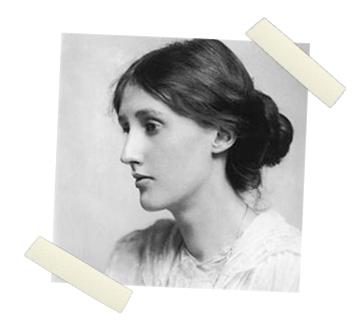
Patient 9:
Virginia VulfAngliyskaya writer (1882-1941)
Diagnosis: depression, hallucinations, nightmares.
Symptoms: is in a deep depression, Virginia complained that all the time "to hear the voices of birds singing in the Olivier ancient Greece." Often long and could not work because of insomnia and nightmares. Since childhood, she suffered suicidal tendencies.
Case History: When Virginia was 13 years old, she experienced attempted rape by her cousins, guest in the house. This marked the beginning of the counter hostility to men and to the physical side of the relationship with them throughout the life of Virginia. Shortly thereafter from pneumonia died suddenly her mother.
Nervous, impressionable girl in despair tried to commit suicide. She rescued, but the deep, protracted depression have since become part of her life. A strong attack of mental disorder overtook the young Virginia and after his father's death in 1904.
Emotional and frank letters and works of Virginia Woolf give grounds for concluding that gay writer. However, this is not true. Due to the experienced childhood tragedy, the fear that she had over men and society, she fell in love with women - but abhor all forms of intimacy, including them, could not bear hugs, does not allow even a handshake. Being 29 years old is married to Leonard Woolf (and the marriage is considered to be exemplary in terms of loyalty and emotional support to spouses of each other), author, by some accounts, has not been able to enter into marital relations with her husband.
via www.adme.ru/citaty/po-kom-zvonit-kolokol-713910/
Website is a list of not very healthy soul authors gave the world not only the magnificent literary works, but also a brilliant creative inspiration in the years ahead.

Patient 1:
Edgar Allan PoAmerikansky writer, poet (1809-1849)
Diagnosis: mental disorder, an accurate diagnosis is not established.
Symptoms: Fear of the dark, memory loss, persecution, inappropriate behavior, hallucinations.
Case History: Since the end of 1830 Poe suffered frequent depressions. In addition, he abused spirits, which affected his psyche is not the best way: under the influence of alcohol consumed writer sometimes fell into a state of violent insanity. For strong drinks soon increased .... Significantly worsened the state of mind of a serious illness According to his young wife (his cousin Virginia, he married thirteen, after seven years of marriage, in 1842, she fell ill with tuberculosis, five years later died). After the death of Virginia - for the remaining two years of his own life - Edgar Allan Poe in love several times and took two attempts to get married. The first failed because of the refusal of the chosen one, it frightened the next breakdown, the second - because of the absence of the groom: shortly before the wedding at heavily drunk and fell in a deranged state. He was found in a cheap tavern Baltimore five days later. The writer was placed in a hospital, where he died after five days of terrible suffering from hallucinations. One of the biggest nightmares at - death alone - has come true: a lot with what he took to be a promise to him in the last hour, but the three in the morning on Oct. 7, 1849 none of the family was not close. Before his death By desperate summons Jeremy Reynolds, a researcher of the North Pole.
The ideas presented to the world: Two popular modern literary genre. The first - the novel (or story) horror. Great influence on Poe had Hoffmann, however Hoffman gloomy romanticism In the first thickened to the consistency of a true nightmare - a viscous, highly sophisticated and hopeless ("Tell-Tale Heart," "Fall of the House of Usher"). Second genre - detective. That Monsieur C. Auguste Dupin, the hero of the stories of Edgar Allan Poe ("The Murders in the Rue Morgue," "The Mystery of Marie Roget"), became the ancestor of the emergence of the deductive method and its apologist for Mr. Sherlock Holmes.

Patient 2:
The German philosopher Friedrich Nietzsche (1844-1900)
Diagnosis: Nuclear mosaic schizophrenia (a literary version, designated in most biographies - possession).
Symptoms: Megalomania (sent out a note with the text: "In two months I'll be the first man on earth", demanded to remove from the walls of the picture, for his apartment "temple"); aberration (he embraced with a horse on the central town square, preventing the movement of the street); severe headaches; inappropriate behavior. The medical records of Nietzsche, in particular, stated that the patient drank from his boot your urine emitted inarticulate cries, took the hospital guard for Bismarck, tried to barricade the door shards of broken glass, slept on the floor beside the bed, jumping on a goat, made a face and stuck out left shoulder.
Case History: Nietzsche suffered a stroke a few; He suffered mental illness the last 20 years of his life (in this period were the most important of his works - for example, "Thus Spake Zarathustra"), 11 of which he spent in psychiatric hospitals, homes for the care of the mother. His condition steadily deteriorated - at the end of the life of a philosopher could be a simple phrase.
The ideas presented to the world: The idea of superman (paradoxically, it is this jumping on a goat, and stick out his left shoulder fellow we associate with a free, nadmoralnoy, perfect, existing beyond good and evil person). The idea of the new morality (morality masters in return morality of slaves): healthy morality should celebrate and strengthen the natural human desire for power. Every other painful and moral decadence. The ideology of fascism: the sick and the weak must die, strong - to win ("Falling shove!"). The assumption "God is dead».

Patient 3:
Ernest HemingueyAmerikansky writer (1899-1961)
Diagnosis: The acute depression, a mental disorder.
Symptoms: suicidal tendencies, persecution, nervous breakdowns.
Case History: In 1960, Hemingway returned to the United States from Cuba. He was tormented by frequent depression, feelings of fear and uncertainty, he almost could not write - and therefore voluntarily agreed to undergo treatment in a psychiatric clinic. Hemingway underwent 20 sessions of electroshock on these procedures, he said: "The doctors who made me an electric shock, the writers do not understand: What is the point was to destroy my brain and erasing my memory, which is my capital, and throw me on the side of life? It was a brilliant cure, only patient they lost. " Upon leaving the clinic Hemingway was convinced that he still can not write, and made the first attempt of suicide, but relatives were able to stop him. At the request of his wife, he took a second course of treatment, but has not changed its intentions. A few days after discharge, he shot himself in the head of your favorite shotgun, charging the pre-both barrels.
The ideas presented to the world: The idea of the "lost generation". Hemingway, like his fellow era Remarque had in mind a particular generation, millstones to grind a particular war, however, the term has appeared a bit too tempting and convenient - since each generation finds a reason to consider themselves lost. New literary device "method of the iceberg" when the mean, compressed text implies generous, heart-rending subtext. "Machismo" new model, embodied in the works, and in life. Hemingway's hero - a stern and taciturn fighter who understands that fighting is useless, but fights to the end. The most uncompromising macho Hemingway was perhaps the fisherman Santiago ("The Old Man and the Sea"), in which the mouth of the Great Ham put the phrase: "Man is not created in order to take a beating. A man can be destroyed but not defeated. " Hemingway himself - a hunter, a soldier, an athlete, sailor, angler, explorer and Nobel laureate, whose body is completely covered with scars - to the great dismay of many, fight to the end did not. However, his ideals writer has not changed. "The man has no right to die in bed, - he said. - Either in battle or a bullet in the forehead ».

Patient 4:
Franz KafkaCheshsky writer (1883 - 1924)
Diagnosis: Severe neurosis psychasthenia functional nature, non-recurring depression.
Symptoms: excitability, with intermittent bouts of apathy, sleep disturbance, exaggerated fears, psychosomatic problems in the intimate sphere.
Case History: deep psychological roots of Kafka's failures originated from the conflict with his father, difficult relationships with family and complicated, tangled love stories. Fascination with writing was not encouraged in the family, and had to do it furtively.
"For me this is a terrible double life - he wrote in his diary - from which, perhaps, there is only one way out - the madness».
When his father insisted that after serving the son was still working in his shop, but not engaged in nonsense, Franz decided to commit suicide and wrote a farewell letter to his friend Max Brod "At the last moment I managed intervening quite unceremoniously, to protect him from" loving parents "- Max Brod wrote in his book about Kafka. His mental condition marked periods of deep calm and smooth, are replaced by the same long periods of the disease state.
Here are lines from his "Diaries" clearly reflect this inner struggle: "I can not sleep. Only the vision of no sleep. Strange instability of all my inner being. The monstrous world that I carry in my head. How do I get rid of him and to release him without destroying? ».
Writer died at age 41 of tuberculosis. Three months later, he was in agony: destroy not only the body but also the mind.
The ideas presented to the world: Kafka was not known during his lifetime, published little, but after his death the writer's work captivated readers a new trend in literature. Kafkaesque world of despair, horror and despair grew out of his personal drama of creation and became the basis of a new aesthetic direction of "literature with a diagnosis of" very typical of the XX century, has lost God, and received in return the absurdity of existence.

Patient 5:
Jonathan SviftIrlandsky writer (1667-1745)
Diagnosis: Pick disease or Alzheimer's disease - experts argue.
Symptoms: dizziness, disorientation, memory loss, inability to recognize people and objects around, catching the meaning of human speech.
Case History: The gradual increase in symptoms up to full dementia later in life.
The ideas presented to the world: A new form of political satire. "Gulliver's Travels" is certainly not the first glance sarcastic enlightened intellectuals to the surrounding reality, but innovation is not in sight, and in optics. While other scoffers looked at life through a magnifying glass or a telescope, the dean of the Cathedral of St. Patrick fashioned for this lens with fancy curved glass. Later this lens with pleasure enjoyed Nikolai Gogol and Saltykov-Shchedrin.

Patient 6:
Jean-Jacques RussoFrantsuzsky writer and philosopher (1712-1778)
Diagnosis: Paranoia.
Symptoms: Mania persecution.
Rousseau imagined conspiracies everywhere, he led the life of a wanderer and never stay long in the belief that all his friends and acquaintances in wait against him or something he is suspected.
Case History: As a result of the conflict with the Church of the writer and the government (the beginning of 1760, after the release of the book "Emile") originally inherent suspicion Rousseau got extremely painful form. He always imagined conspiracies, he led the life of a wanderer and never stay long in the belief that all his friends and acquaintances in wait against him or something he is suspected. So, once Rousseau decided that the inhabitants of the castle, where he was staying, according to his poisoner deceased servant, and demanded the autopsy of the deceased.
The ideas presented to the world: Educational Reform. The modern child-rearing allowance on many items repeated "Emile": instead of the repressive methods of education Rousseau proposed method of encouragement and affection; he believed that the child should be free from mechanical zatverzhivaniya dry facts, and explain everything in the living examples, and only when the child will be mentally ready to accept the new information; Rousseau believed the task of pedagogy inherent nature of the development of talent, not a correction of the individual. A new type of literary character and new literary trends. Rousseau starry-generated fantasy creature - tearful "savage" guided not by reason, but the feeling (but a moral sense), - continue to develop, grow, and the oldest in the framework of sentimentalism and romanticism. The idea of a democratic state, stems directly from the work "The Social Contract". The idea of revolution (this works of Rousseau inspired fighters for the ideals of the French Revolution, Rousseau himself, paradoxically, was never a supporter of such radical measures).

Patient 7:
Nikolai GogolRussky writer (1809-1852)
Diagnosis: Schizophrenia periodic psychosis.
Symptoms: visual and auditory hallucinations; periods of apathy and lethargy (up to complete immobility and inability to respond to external stimuli), alternating with bouts of excitement; depression; hypochondria in an acute form (the great writer was convinced that all the organs in his body shifted slightly and the stomach is "upside down"); claustrophobia.
Case History: These or other symptoms of schizophrenia accompanied Gogol throughout his life, but in the last year of the disease has progressed significantly. January 26, 1852 of typhoid fever sister died of his close friend Catherine Mikhailovna Khomyakov, and this has caused the death of the writer's strongest attack of hypochondria. Gogol plunged into incessant prayers, virtually refused food, complained of weakness and malaise, and argued that the terminally ill, but doctors no disease, except for a small gastrointestinal disorder, had not been diagnosed. On the night of 11 of February 12, a writer burnt his manuscript (the next morning he explained this act machinations of the evil), then his condition steadily deteriorated. Treatment (not too much, however, the professional: a leech in his nostrils, wrapping sheets and cold dipping their heads in ice water), positive results were achieved. February 21, 1852 the writer had died. The true cause of his death remained unclear. Yet, most likely, simply Gogol himself into a complete nervous and physical exhaustion - it is possible that the timely help of a psychiatrist could have saved his life.
The ideas presented to the world: A particular love for the little man (layman), consisting of half-disgusted, half of pity. A whole bunch of amazing accuracy found Russian types. Gogol has developed several role models (the brightest - the characters of "Dead Souls"), which is quite relevant to this day.

Patient 8:
Guy de MopassanFrantsuzsky writer (1850-1893)
Diagnosis: Progressive cerebral palsy.
Symptoms: Hypochondria, suicidal tendencies, seizures riot, delusions, hallucinations.
Case History: All my life Maupassant hypochondriac, he was very afraid to go crazy. Since 1884 Maupassant started frequent nervous attacks and hallucinations. In a state of extreme nervous excitement he twice tried to commit suicide (once with the help of a revolver, and the second - with a knife for papers, both times unsuccessfully). In 1891 the writer was placed in the clinic of Dr. Blanche in Passy - where he lived in a semi-conscious state until death.
The ideas presented to the world: fiziologizma naturalism (including erotic) in the literature. The need tireless fight soulless consumer society (original clones "Bel Ami" hard recreate still alive French writer Michel Houellebecq and Frédéric Beigbeder, trying to keep up and our Sergei Minaev).

Patient 9:
Virginia VulfAngliyskaya writer (1882-1941)
Diagnosis: depression, hallucinations, nightmares.
Symptoms: is in a deep depression, Virginia complained that all the time "to hear the voices of birds singing in the Olivier ancient Greece." Often long and could not work because of insomnia and nightmares. Since childhood, she suffered suicidal tendencies.
Case History: When Virginia was 13 years old, she experienced attempted rape by her cousins, guest in the house. This marked the beginning of the counter hostility to men and to the physical side of the relationship with them throughout the life of Virginia. Shortly thereafter from pneumonia died suddenly her mother.
Nervous, impressionable girl in despair tried to commit suicide. She rescued, but the deep, protracted depression have since become part of her life. A strong attack of mental disorder overtook the young Virginia and after his father's death in 1904.
Emotional and frank letters and works of Virginia Woolf give grounds for concluding that gay writer. However, this is not true. Due to the experienced childhood tragedy, the fear that she had over men and society, she fell in love with women - but abhor all forms of intimacy, including them, could not bear hugs, does not allow even a handshake. Being 29 years old is married to Leonard Woolf (and the marriage is considered to be exemplary in terms of loyalty and emotional support to spouses of each other), author, by some accounts, has not been able to enter into marital relations with her husband.
via www.adme.ru/citaty/po-kom-zvonit-kolokol-713910/

